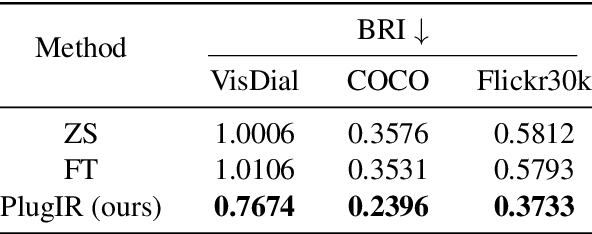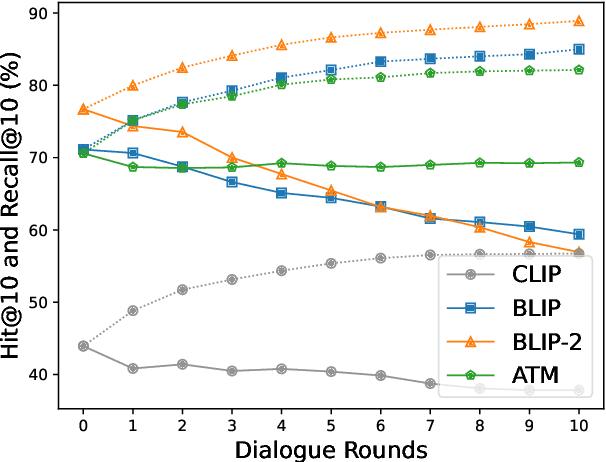Junsung Park
No Thing, Nothing: Highlighting Safety-Critical Classes for Robust LiDAR Semantic Segmentation in Adverse Weather
Mar 20, 2025Abstract:Existing domain generalization methods for LiDAR semantic segmentation under adverse weather struggle to accurately predict "things" categories compared to "stuff" categories. In typical driving scenes, "things" categories can be dynamic and associated with higher collision risks, making them crucial for safe navigation and planning. Recognizing the importance of "things" categories, we identify their performance drop as a serious bottleneck in existing approaches. We observed that adverse weather induces degradation of semantic-level features and both corruption of local features, leading to a misprediction of "things" as "stuff". To mitigate these corruptions, we suggest our method, NTN - segmeNt Things for No-accident. To address semantic-level feature corruption, we bind each point feature to its superclass, preventing the misprediction of things classes into visually dissimilar categories. Additionally, to enhance robustness against local corruption caused by adverse weather, we define each LiDAR beam as a local region and propose a regularization term that aligns the clean data with its corrupted counterpart in feature space. NTN achieves state-of-the-art performance with a +2.6 mIoU gain on the SemanticKITTI-to-SemanticSTF benchmark and +7.9 mIoU on the SemanticPOSS-to-SemanticSTF benchmark. Notably, NTN achieves a +4.8 and +7.9 mIoU improvement on "things" classes, respectively, highlighting its effectiveness.
Know "No" Better: A Data-Driven Approach for Enhancing Negation Awareness in CLIP
Jan 19, 2025Abstract:While CLIP has significantly advanced multimodal understanding by bridging vision and language, the inability to grasp negation - such as failing to differentiate concepts like "parking" from "no parking" - poses substantial challenges. By analyzing the data used in the public CLIP model's pre-training, we posit this limitation stems from a lack of negation-inclusive data. To address this, we introduce data generation pipelines that employ a large language model (LLM) and a multimodal LLM to produce negation-inclusive captions. Fine-tuning CLIP with data generated from our pipelines, we develop NegationCLIP, which enhances negation awareness while preserving the generality. Moreover, to enable a comprehensive evaluation of negation understanding, we propose NegRefCOCOg-a benchmark tailored to test VLMs' ability to interpret negation across diverse expressions and positions within a sentence. Experiments on various CLIP architectures validate the effectiveness of our data generation pipelines in enhancing CLIP's ability to perceive negation accurately. Additionally, NegationCLIP's enhanced negation awareness has practical applications across various multimodal tasks, demonstrated by performance gains in text-to-image generation and referring image segmentation.
Unleashing Multi-Hop Reasoning Potential in Large Language Models through Repetition of Misordered Context
Oct 09, 2024



Abstract:Multi-hop reasoning, which requires multi-step reasoning based on the supporting documents within a given context, remains challenging for large language models (LLMs). LLMs often struggle to filter out irrelevant documents within the context, and their performance is sensitive to the position of supporting documents within that context. In this paper, we identify an additional challenge: LLMs' performance is also sensitive to the order in which the supporting documents are presented. We refer to this as the misordered context problem. To address this issue, we propose a simple yet effective method called context repetition (CoRe), which involves prompting the model by repeatedly presenting the context to ensure the supporting documents are presented in the optimal order for the model. Using CoRe, we improve the F1 score by up to 30%p on multi-hop QA tasks and increase accuracy by up to 70%p on a synthetic task. Additionally, CoRe helps mitigate the well-known "lost-in-the-middle" problem in LLMs and can be effectively combined with retrieval-based approaches utilizing Chain-of-Thought (CoT) reasoning.
Rethinking Data Augmentation for Robust LiDAR Semantic Segmentation in Adverse Weather
Jul 02, 2024Abstract:Existing LiDAR semantic segmentation methods often struggle with performance declines in adverse weather conditions. Previous research has addressed this issue by simulating adverse weather or employing universal data augmentation during training. However, these methods lack a detailed analysis and understanding of how adverse weather negatively affects LiDAR semantic segmentation performance. Motivated by this issue, we identified key factors of adverse weather and conducted a toy experiment to pinpoint the main causes of performance degradation: (1) Geometric perturbation due to refraction caused by fog or droplets in the air and (2) Point drop due to energy absorption and occlusions. Based on these findings, we propose new strategic data augmentation techniques. First, we introduced a Selective Jittering (SJ) that jitters points in the random range of depth (or angle) to mimic geometric perturbation. Additionally, we developed a Learnable Point Drop (LPD) to learn vulnerable erase patterns with Deep Q-Learning Network to approximate the point drop phenomenon from adverse weather conditions. Without precise weather simulation, these techniques strengthen the LiDAR semantic segmentation model by exposing it to vulnerable conditions identified by our data-centric analysis. Experimental results confirmed the suitability of the proposed data augmentation methods for enhancing robustness against adverse weather conditions. Our method attains a remarkable 39.5 mIoU on the SemanticKITTI-to-SemanticSTF benchmark, surpassing the previous state-of-the-art by over 5.4%p, tripling the improvement over the baseline compared to previous methods achieved.
Precision matters: Precision-aware ensemble for weakly supervised semantic segmentation
Jun 28, 2024



Abstract:Weakly Supervised Semantic Segmentation (WSSS) employs weak supervision, such as image-level labels, to train the segmentation model. Despite the impressive achievement in recent WSSS methods, we identify that introducing weak labels with high mean Intersection of Union (mIoU) does not guarantee high segmentation performance. Existing studies have emphasized the importance of prioritizing precision and reducing noise to improve overall performance. In the same vein, we propose ORANDNet, an advanced ensemble approach tailored for WSSS. ORANDNet combines Class Activation Maps (CAMs) from two different classifiers to increase the precision of pseudo-masks (PMs). To further mitigate small noise in the PMs, we incorporate curriculum learning. This involves training the segmentation model initially with pairs of smaller-sized images and corresponding PMs, gradually transitioning to the original-sized pairs. By combining the original CAMs of ResNet-50 and ViT, we significantly improve the segmentation performance over the single-best model and the naive ensemble model, respectively. We further extend our ensemble method to CAMs from AMN (ResNet-like) and MCTformer (ViT-like) models, achieving performance benefits in advanced WSSS models. It highlights the potential of our ORANDNet as a final add-on module for WSSS models.
Interactive Text-to-Image Retrieval with Large Language Models: A Plug-and-Play Approach
Jun 05, 2024



Abstract:In this paper, we primarily address the issue of dialogue-form context query within the interactive text-to-image retrieval task. Our methodology, PlugIR, actively utilizes the general instruction-following capability of LLMs in two ways. First, by reformulating the dialogue-form context, we eliminate the necessity of fine-tuning a retrieval model on existing visual dialogue data, thereby enabling the use of any arbitrary black-box model. Second, we construct the LLM questioner to generate non-redundant questions about the attributes of the target image, based on the information of retrieval candidate images in the current context. This approach mitigates the issues of noisiness and redundancy in the generated questions. Beyond our methodology, we propose a novel evaluation metric, Best log Rank Integral (BRI), for a comprehensive assessment of the interactive retrieval system. PlugIR demonstrates superior performance compared to both zero-shot and fine-tuned baselines in various benchmarks. Additionally, the two methodologies comprising PlugIR can be flexibly applied together or separately in various situations. Our codes are available at https://github.com/Saehyung-Lee/PlugIR.
Entropy is not Enough for Test-Time Adaptation: From the Perspective of Disentangled Factors
Mar 12, 2024Abstract:Test-time adaptation (TTA) fine-tunes pre-trained deep neural networks for unseen test data. The primary challenge of TTA is limited access to the entire test dataset during online updates, causing error accumulation. To mitigate it, TTA methods have utilized the model output's entropy as a confidence metric that aims to determine which samples have a lower likelihood of causing error. Through experimental studies, however, we observed the unreliability of entropy as a confidence metric for TTA under biased scenarios and theoretically revealed that it stems from the neglect of the influence of latent disentangled factors of data on predictions. Building upon these findings, we introduce a novel TTA method named Destroy Your Object (DeYO), which leverages a newly proposed confidence metric named Pseudo-Label Probability Difference (PLPD). PLPD quantifies the influence of the shape of an object on prediction by measuring the difference between predictions before and after applying an object-destructive transformation. DeYO consists of sample selection and sample weighting, which employ entropy and PLPD concurrently. For robust adaptation, DeYO prioritizes samples that dominantly incorporate shape information when making predictions. Our extensive experiments demonstrate the consistent superiority of DeYO over baseline methods across various scenarios, including biased and wild. Project page is publicly available at https://whitesnowdrop.github.io/DeYO/.
DAFA: Distance-Aware Fair Adversarial Training
Jan 23, 2024Abstract:The disparity in accuracy between classes in standard training is amplified during adversarial training, a phenomenon termed the robust fairness problem. Existing methodologies aimed to enhance robust fairness by sacrificing the model's performance on easier classes in order to improve its performance on harder ones. However, we observe that under adversarial attacks, the majority of the model's predictions for samples from the worst class are biased towards classes similar to the worst class, rather than towards the easy classes. Through theoretical and empirical analysis, we demonstrate that robust fairness deteriorates as the distance between classes decreases. Motivated by these insights, we introduce the Distance-Aware Fair Adversarial training (DAFA) methodology, which addresses robust fairness by taking into account the similarities between classes. Specifically, our method assigns distinct loss weights and adversarial margins to each class and adjusts them to encourage a trade-off in robustness among similar classes. Experimental results across various datasets demonstrate that our method not only maintains average robust accuracy but also significantly improves the worst robust accuracy, indicating a marked improvement in robust fairness compared to existing methods.
PUCA: Patch-Unshuffle and Channel Attention for Enhanced Self-Supervised Image Denoising
Oct 16, 2023Abstract:Although supervised image denoising networks have shown remarkable performance on synthesized noisy images, they often fail in practice due to the difference between real and synthesized noise. Since clean-noisy image pairs from the real world are extremely costly to gather, self-supervised learning, which utilizes noisy input itself as a target, has been studied. To prevent a self-supervised denoising model from learning identical mapping, each output pixel should not be influenced by its corresponding input pixel; This requirement is known as J-invariance. Blind-spot networks (BSNs) have been a prevalent choice to ensure J-invariance in self-supervised image denoising. However, constructing variations of BSNs by injecting additional operations such as downsampling can expose blinded information, thereby violating J-invariance. Consequently, convolutions designed specifically for BSNs have been allowed only, limiting architectural flexibility. To overcome this limitation, we propose PUCA, a novel J-invariant U-Net architecture, for self-supervised denoising. PUCA leverages patch-unshuffle/shuffle to dramatically expand receptive fields while maintaining J-invariance and dilated attention blocks (DABs) for global context incorporation. Experimental results demonstrate that PUCA achieves state-of-the-art performance, outperforming existing methods in self-supervised image denoising.
 Add to Chrome
Add to Chrome Add to Firefox
Add to Firefox Add to Edge
Add to Edge